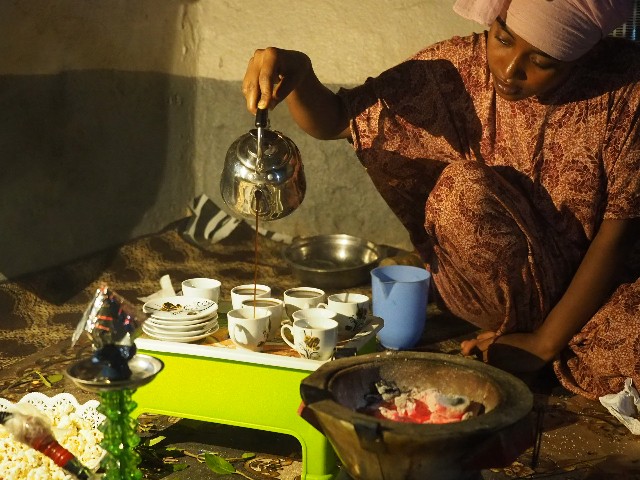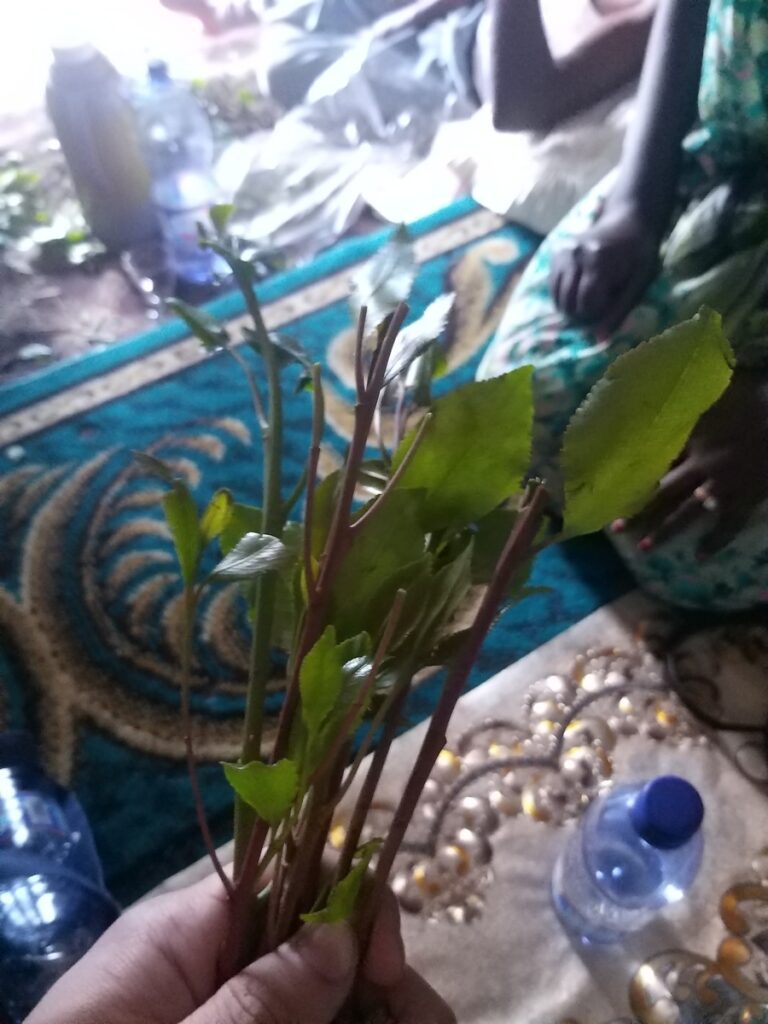“Injera tastes bad” — This is a phrase you’ll almost certainly hear whenever Ethiopian cuisine is discussed. On social media and blogs, harsh comments about its unique flavor abound, and among travelers, it’s known as a dish “to be eaten with mental preparation.” But is this staple food, beloved across this East African nation, really that unpalatable? Based on my experience eating my way through the country, I’d like to delve into this mystery.
What is Injera?
View this post on Instagram
Injera is a fermented flatbread made from teff grain. Teff has been cultivated in Ethiopia’s highlands since ancient times and is known for its high nutritional value and gluten-free properties. Rich in iron and containing protein, it serves as an important nutritional source for local people.
The preparation involves mixing teff flour with water, fermenting it for several days, and then cooking it on a large circular griddle. This fermentation process is key to creating injera’s distinctive flavor. While it resembles a crepe in appearance, its surface is covered with countless small holes, giving it a unique sponge-like texture. These holes are called “eyes” and are considered an important indicator of whether the injera is of good quality.
First Contact: In Addis Ababa

My first encounter with injera was at a restaurant in the Bole district of Addis Ababa, Ethiopia’s capital. I visited a highly-rated local restaurant during a layover for a domestic flight. Filled with high expectations based on the numerous reviews, the reality surpassed my imagination in unexpected ways.
Upon entering the restaurant, a distinctive fermented aroma was already in the air. The injera that arrived shortly after ordering was a large circular bread, even bigger than I had imagined. Its grayish color initially raised some concerns, but the countless small holes on its surface created an artistic pattern.

The moment I put it in my mouth, a unique flavor that’s difficult to describe spread across my palate. While not completely inedible, its distinctive sourness was remarkable. The distinctive aroma and taste from fermentation were unlike anything else, different even from vinegar. The countless bubbles on the surface seemed to tell the story of its long fermentation process.
The accompanying shiro (bean paste) and berbere (spice mix) were exquisite. The creamy texture and spicy flavor of the shiro, combined with the complex aroma of berbere, truly represented the essence of traditional Ethiopian cuisine. However, because these accompaniments were so delicious, I found myself focusing more on them than on the injera itself as the meal progressed.
The Unavoidable Injera

Injera kept accompanying every meal I ordered
Although I thought “that’s enough injera for me,” it proved impossible to avoid during meals in Ethiopia. Even when I ordered a beef dish called shekla tibs, injera came with it without being requested. It seems that injera is equivalent to white rice in many Asian countries. Its status as a staple food was more firmly established than I had imagined, and I realized that for local people, a meal means injera.

Injera with an elaborate array of accompaniments
In the Awasa region, I encountered a dish recommended by a local resident, featuring seven different colorful ingredients arranged on top of injera. These included doro wat (spicy stew), kitfo (raw meat dish), and various vegetable stews. Each had its own distinctive flavor and was delicious on its own. However, when wrapped in injera and eaten together, the sourness of the injera once again made its presence known. Local people skillfully tore pieces of injera with their hands, wrapped the ingredients, and ate them. While impressed by their dexterity, I was still struggling with the injera.
The Last Supper and an Unexpected Reconciliation

Even when I ordered regular bread, injera came along with it
By the end of my trip, fatigue had built up, and my aversion to injera had peaked. Even when I ordered bread, injera came with it as an extra. In this region, it was common to serve injera rolled up. It looked like pressed sushi from Japan, which made me hope it might be easier to eat, but the characteristic sourness remained. However, by generously sprinkling berbere powder on it, I gradually found it more palatable.

My last dinner also featured injera
And then came my final dinner in Ethiopia. It coincided with the fasting period of Ethiopian Orthodox Church, so meat dishes couldn’t be served, resulting in a combination of vegetarian dishes with injera. Colorful accompaniments including lentil stew, vegetable curry, and fresh salads were arranged on the platter. Strangely, thinking that I wouldn’t be able to taste it again, I began to miss that sour flavor. I savored the last injera while drinking my favorite tej (honey wine). Perhaps due to the compatibility between fermented foods, the combination of tej and injera was unexpectedly pleasant.
Conclusion
In conclusion, I never came to truly enjoy the taste of injera. However, strangely enough, that unique flavor has certainly been etched in my memory, and I find myself recalling it from time to time. The complex taste characteristic of fermented foods might have a depth that can’t be simply dismissed as “bad.”
The reason Ethiopians love injera probably goes beyond mere taste preferences and has cultural depth. This fermented food with thousands of years of history forms the foundation of Ethiopian food culture and is deeply rooted in people’s lives. Additionally, the custom of sharing sides while eating from the same injera seems to play a role in strengthening community bonds.
For me, injera became a valuable experience that taught me the difficulties and fascinations of understanding different cultures. The process of gradually accepting a flavor that initially confused me might mirror the very movement of the heart when encountering a new culture. If I have the opportunity to visit Ethiopia again, I would like to challenge myself to try injera once more. Perhaps that time, I might discover new flavors beyond my initial confusion.
![Mysterious Ethiopian Liquor: Drink “Tella” at a Local Pub! [Ethiopia Travel Journal]](https://en.kosupatravel.com/wp-content/uploads/2022/07/20220728123957.jpg)
![Mysterious Ethiopian Honey Wine: Drink “Tej” at a Local Pub! [Ethiopia Travel Journal]](https://en.kosupatravel.com/wp-content/uploads/2022/08/20220809171406.jpg)



![Getting Lost in Addis Ababa’s “Mercato,” the Market That Even Locals Struggle to Navigate [Ethiopia Travel Diary]](https://en.kosupatravel.com/wp-content/uploads/2024/12/20240412145520.jpg)